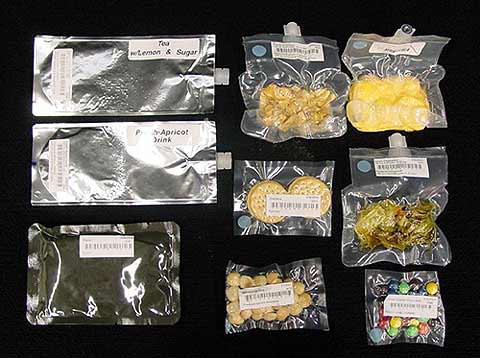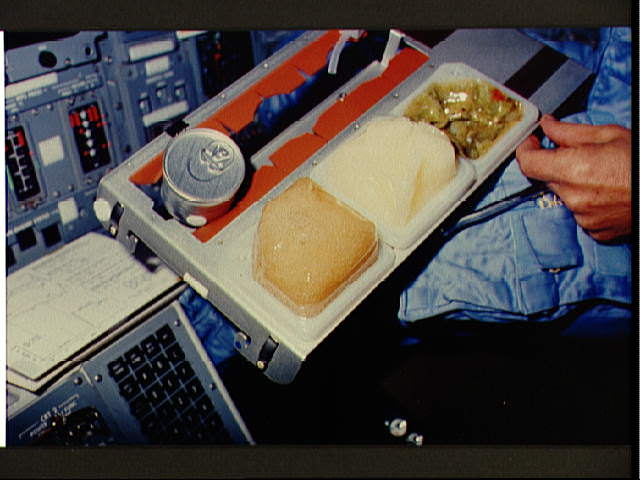[/caption]
NASA has made tremendous progress during the past fifty years with regards to food science. Gone are the days of nutrients in toothpaste style tubes and it’s safe to assume NASA astronauts haven’t had to drink Tang in decades.
At a recent meeting of the American Chemical Society, Maya R. Cooper, senior research scientist at NASA’s Space Food Systems Laboratory discussed how feeding astronauts will be one of the most difficult issues to resolve before launching a manned mission to Mars.
Despite all the progress NASA has made, what challenges still need to be overcome to feed the crew of a manned mission to Mars?
When we plan a camping trip, not much thought is given to what will be eaten during a weekend, a week, or even a month’s time. Modern food science has given us products that are safe to eat after even weeks, and in some cases months. It is very easy to go to the store and load up on delicious and nutritious food, with the expectation that said food will be relatively safe to eat with minor concerns for safety.
Manned spaceflight however, isn’t your average camping trip. Even during a one to two week mission, NASA astronauts can’t just open a refrigerator and make themselves a cold-cut sandwich. Food scientists at NASA must specially prepare meals for astronauts in order to ensure said meals are safe to consume during the mission, not only for the crew, but for their habitat as well. The average can or bottle of pop wouldn’t provide the same level of safety and satisfaction for a crew in space as it would for a person on Earth. Food crumbs can clog air filters or become lodged into sensitive equipment. Basically, what works well for a camping trip doesn’t always work for an ISS mission and what works for the ISS crew may not work for a multi-year mission to Mars.
In her talk, Cooper discussed some of the issues such as food safety that she and her team currently address. Some of the other issues discussed included food packaging, nutrition, weight, and of course variety.
Cooper cited that the current daily allocation of food for manned spaceflight crews is just under four pounds per day. Estimating a five-year trek to Mars would require over 7,000 pounds of food per crew person. “That’s a clear impediment to a lot of mission scenarios,” Cooper said. “We need new approaches. Right now, we are looking at the possibility of implementing a bioregenerative system that would involve growing crops in space and possibly shipping some bulk commodities to a Mars habitat as well. This scenario involves much more food processing and meal preparation than the current food system developed for the space shuttles and the International Space Station.”

Image Credit: NASA/Johnson Space Flight Center
The idea behind bioregenerative systems is that plants could multi-task, not only providing food, but also removing carbon dioxide gas and releasing oxygen, just like plants on Earth. Plants that are prime candidates for a Mars mission would have very little inedible structure. So far, ten plants that require little room and grow with minimal work have been identified. A few of the ten ideal plants identified are lettuce, spinach, carrots, tomatoes, strawberries, some herbs and cabbage.
One other idea Cooper suggested for future manned missions to Mars, would be to ship food products ahead of time. Sending supplies in advance of a mission would result in less food and packaging flying onboard the manned spacecraft headed to Mars. There are a few questions regarding sending supplies in advance, namely what happens if a critical supply ship fails to reach Mars and whether current food preservation technology can guarantee adequate nutritional content for a mission to Mars.
“The NASA Advanced Food Technology project is currently working to address the issues of food variety, weight, volume, nutrition and trash disposal through research and external academic and commercial collaborations,” Cooper noted.
Source: American Chemical Society
Ray Sanders is a Sci-Fi geek, astronomer and space/science blogger. Visit his website Dear Astronomer and follow on Twitter (@DearAstronomer) or Google+ for more space musings.

